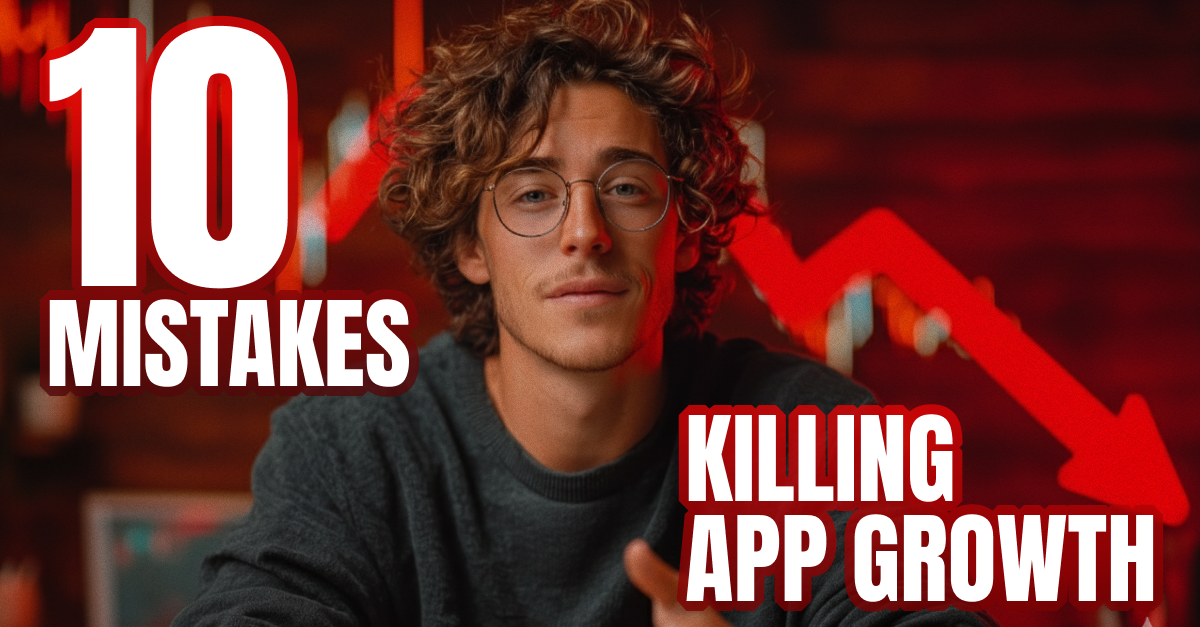If you’re launching an app, you might be self-sabotaging your marketing efforts without even realizing.
These are ten common mistakes founders make, so check if you’re guilty of any of these, and make sure you fix them before it costs you thousands in mrr.

No direct or indirect link to the app
Here’s the thing. We all know by now that most app founder choose not to have their app name or link in the post to keep it intriguing enough and avoid the “paid ad” effect. I get it.
But if nothing in your content hints to any app, viewers simply won’t know what even to look for.
It might be easier to go viral this way, but at what cost? Even if you choose to keep some videos awareness based, make sure you’re throwing some CTAs in the mix. Otherwise you might be throwing money out the window.
Following trends blindly
Trends are your best friend. Think about it: it’s like having free, proven hooks and formats that refresh everyday and that you can plug and play into your content. Don’t miss out on them.
Now, while this is true, make sure you’re not following them blindly. If you’re not really adapting a trend to your niche, or twisting it to include a clever CTA within your posts, there’s little to no point.
Once again, be careful not to waste your reach on content that doesn’t lead to downloads.
Not iterating on content that works
This sounds obvious, but still so many founders fall into the “original” trap.
If something works, use it. Change “mom” to “sister” in your hook, wear a green shirt instead of a blue one, spread the same viral format across all your ambassadors…
Make sure you milk a viral idea until the very last view. Then worry about finding the next hit.
Skipping viral hooks research (or doing it wrong)
Hook writing is all about patterns, and you shouldn’t approach it like an artist, but rather as an analyst.
We have written many pieces on this topic, and compiled dozens of viral hook datasets for over 15 niches that we always recommend as a starting point.
Nothing will give you insights on what works and what doesn’t as studying the ones that did it before.
Not repeating hooks across creator accounts
If a hook works, one account isn’t enough. Once again, you need to make the most of every single word you’ve used to go viral. If it happened once, it will happen again. Don’t limit your reach.
Betting everything on a single account early
One account can be shadowbanned, deprioritized by the algorithm, or simply never kick off on the right foot, and then you’re right back at the start.
Spread risk and accelerate learning by launching multiple accounts and creators. A handful of formats, a few dozens of hooks and blast them everywhere. It’s the only way to actually rule out the poor performers from the hits.
Not posting enough
Distribution is a frequency game. Sporadic posting will only lead you to sporadic results. Truth is, frequency not only helps you get the algorithm on your side, it also allows you to test as many formats and variations as humanly possible.
Promoting everything at once
Believe it or not, you don’t always need to promote your app as a whole. Focus on your highlight features, if you don’t have any, go make some from scratch.
Take it from Copia, who designed features optimized for virality, or from Couple Joy, who drove most views and downloads through their lock screen widget feature.
Ignoring comments as product and content feedback
Comments are free user research. They reveal pretty much all the misunderstandings, objections, feature requests, and new content ideas your audience have. Read them, scan through recurring themes and patterns, then get to work.
Giving up too soon
Last but not least, don’t give up too soon. Really. It’s gonna be challenging at first, you might get stuck at the 200-view jail and feel like you’ll never make it. Keep pushing, stay analytical. If you combine research, scale, frequency and quick iterations, it won’t last forever.

Leave a Reply